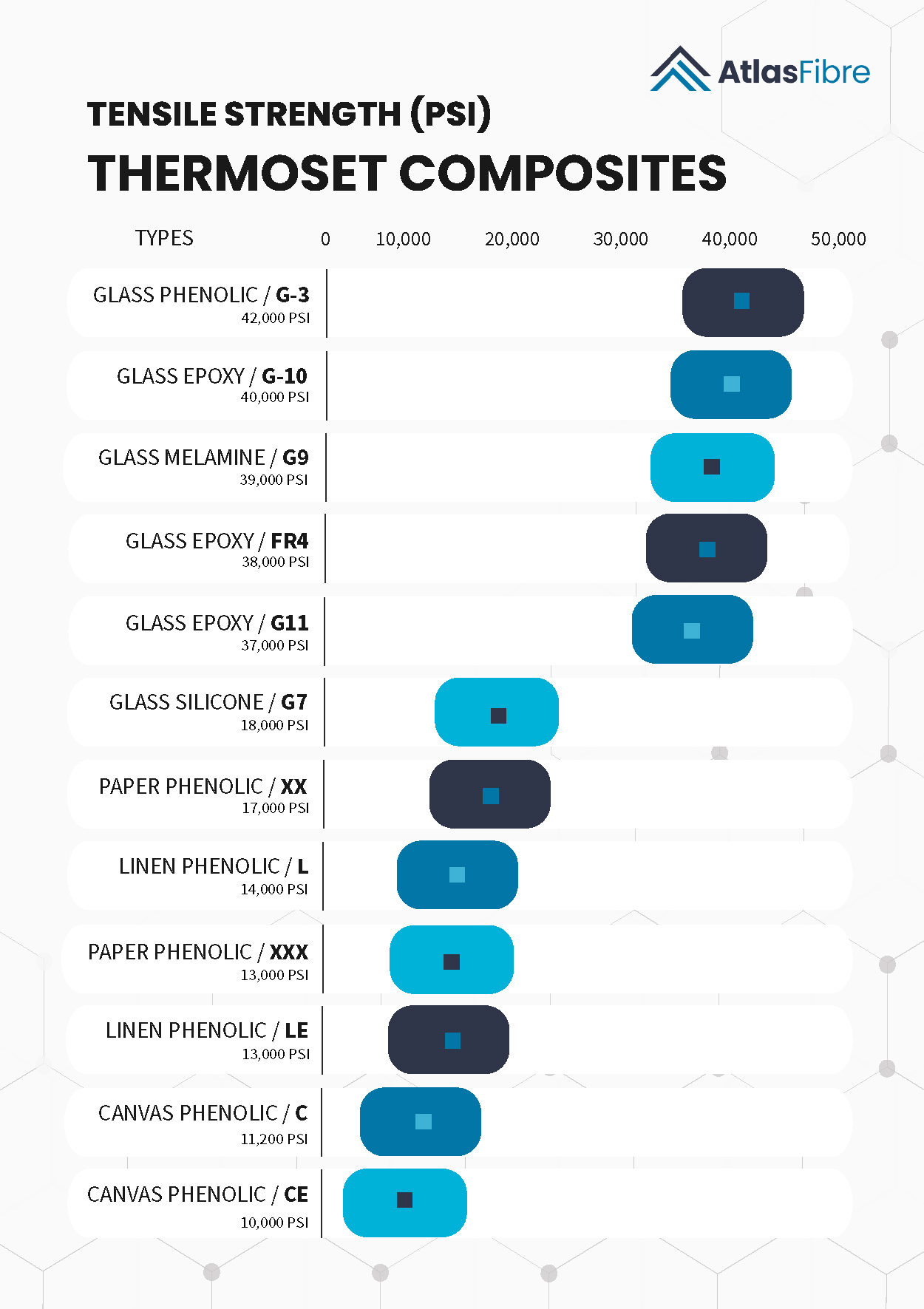Mastering the Mechanics of Tensile Strength in Thermoset Composite
Understanding the tensile strength of thermoset composites is crucial for engineers, designers, and materials scientists aiming to create robust and reliable products. These composites, known for their rigidity and high resistance to heat, chemical degradation, and wear, are fundamental in industries ranging from aerospace and automotive to construction and electronics.
Tensile strength, a key mechanical property, measures the ability of a material to withstand tension and is a critical factor in determining the performance and durability of thermoset composites under load. (Read more about the properties of thermoset composites).
Whether you’re a seasoned professional or new to the field, gaining a deeper understanding of this important mechanical property will enhance your ability to innovate and solve engineering challenges with confidence.
What is Tensile Strength?
Tensile strength is the maximum amount of stress that a material can withstand while being stretched or pulled before “failure” – defined as the breaking or permanent deformation of the material. Tensile strength is an important mechanical property to evaluate because it indicates a materials ability to resist tensile forces.
Keep in mind that tensile strength, which involves pulling and stretching forces, is different than compressive strength which involves pushing or squeezing forces.
How to Determine Tensile Strength
The tensile strength of a material is determined by applying tensile load (the force that stretches or pulls the material apart) and measuring the point at which it fractures or yields. Tensile load is calculated by dividing the maximum load by the original cross-sectional area of the specimen with the units of tensile strength typically measured in megapascals (MPa) or pounds per square inch (psi).
Materials exhibit three different types of tensile strength:
- Yield strength is the maximum stress a material can withstand without permanent deformation
- Ultimate tensile strength is the maximum stress the material can endure before breaking
- Fracture strength is the stress at the point of actual breakage.
The Tensile Strength of Thermoset Composites
Compared to other material classes like metals, unreinforced polymers and ceramics, thermoset composites, like G10 or FR-4) generally have very high tensile strengths. Check out the tensile strength of the different types of thermoset composites provided by Atlas Fibre (also available on our comparative materials data sheet):

- Unreinforced thermoset polymers like epoxies and polyesters have moderate breaking strengths in the range of 60-120 MPa (8,702-17,404 PSI). However, when reinforced with high-strength fibers like carbon, glass, or aramid, thermoset composites exhibit tensile strengths an order of magnitude higher.
- Glass fiber reinforced thermoset composites (GFRP) typically have rupture strengths in the range of 500-900 MPa (72,519-130,534 PSI) for epoxy matrices and 300-600 MPa (43,511-87,023 PSI) for polyester matrices.
- Carbon fiber reinforced thermoset composites (CFRP) can achieve very high strengths from 600 MPa (87,023 PSI) for standard modulus fibers up to 1500-2000 MPa (217,557-290,075 PSI) for intermediate and high modulus carbon fibers in an epoxy matrix.
- Aramid (Kevlar) fiber reinforced thermoset composites have high breaking strengths around 1000-1500 MPa (145,038-217,557 PSI).
- In comparison, common metallic materials like aluminum alloys have tensile strengths of 300-600 MPa (43,511-87,023 PSI), while high-strength steels are around 700-1600 MPa (101,526-232,061 PSI). So high-performance thermoset composites can match or exceed the tensile strength of most metallic materials while being significantly lighter.
- Ceramic materials are generally quite brittle with low rupture strengths, typically less than 300 MPa (43,511 PSI).
Thermoset Composites: Stronger for Longer
The high tensile strengths of fiber-reinforced thermoset composites arise from the strong adhesion between the reinforcing fibers and polymer matrix, allowing efficient stress transfer. Optimizing fiber type, orientation and volume fraction can further enhance their tensile properties. Their lightweight and high specific strength make thermoset composites attractive for weight-critical structural applications requiring high tensile performance.
Interested in learning more about the properties of different thermoset composites? Contact a member of the Atlas Fibre team or view the comparative data sheet now.


